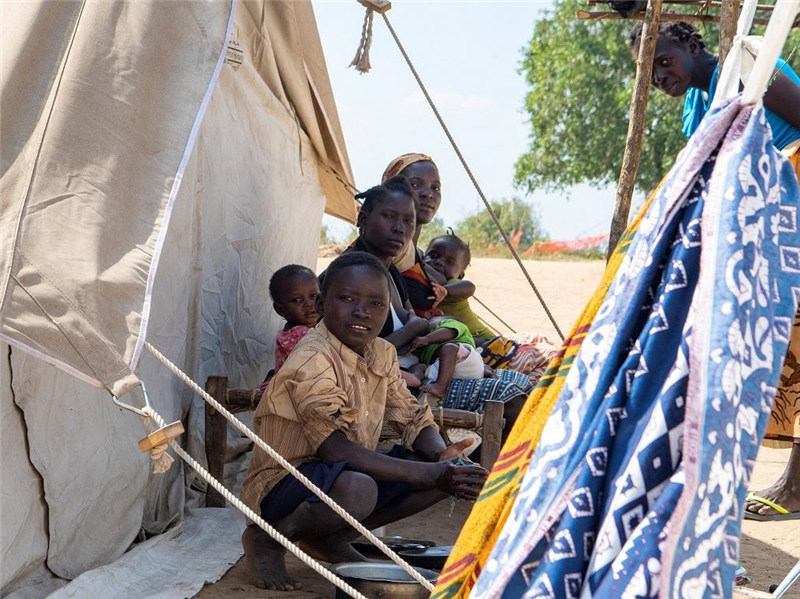
A family outside of their tent in the Taratara Camp, in Cabo Delgado province (UN Photo/Eskinder Debebe)
By Patrick Fuller
As climate change intensifies, extreme weather events, such as floods, storms, bushfires and heatwaves are forcing millions from their homes each year. In 2018, disasters displaced 17.2 million people from their homes, 90 per cent fled weather and climate-related hazards.
There were 1,600 recorded disaster events over the course of 2018 but the real number is much higher. Most disasters go unreported. Small and localised, they are largely ignored by the media, striking in remote and inaccessible areas where communities are left to fend for themselves with little or no government support.
Disaster displacement is generally temporary where people are able to return home relatively quickly after an evacuation. But ‘mega-disasters’ such as earthquakes and tsunamis can result in millions facing prolonged displacement. Most take refuge with host families or in rented accommodation, rather than in communal shelters or camps. Of the 1.5 million people displaced by the 2010 earthquake in Haiti, 38,000 remained in temporary accommodation eight years later.
Disaster displacement is often a result of a multitude of inter-connected factors. Climate change and environmental degradation driven by unsustainable economic growth and poor development practices. Conflict over water, land and other natural resources may follow, driving people to migrate elsewhere.
Without concrete climate and development action, just over 143 million people in Sub-Saharan Africa, South Asia, and Latin America - or around 2.8 percent of the population of these three regions - could be forced to move within their own countries to escape the slow-onset impacts of climate change.